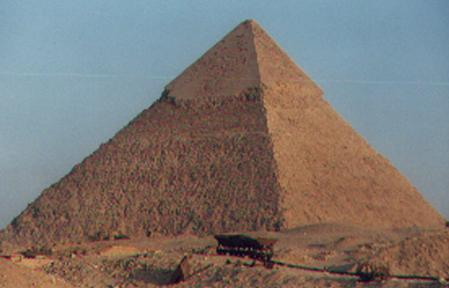The Seven Wonders of the Ancient World

The 7 Wonders of the Ancient World were extraordinary marvels of architecture, human ingenuity, and engineering on a scale that even the greatest artists and engineers of modern times would have a hard time replicating today. These man-made structures were all built sometime during the Classical Era and were located around the Mediterranean Region at that time. In books and scrolls written by the first true historians, Herodotus and Callimachus of Cyrene, many scholars found lists of these true works of art the likes of which you will not find in the world today. The list we currently reference today was compiled in the Middle Ages and only includes places that the ancient Greeks had visited or conquered. Only one of the seven ancient wonders still stands and arguably one of the most famous ones at that, the Great Pyramid(s) of Giza. Unfortunately, as it is in many occurrences within history time caught up to the rest of these masterpieces. Some were great tombs of remembered Kings, others were monolithic statues praising deities, but the reason that they are so famous is because frankly most of them just tested the limits of what was humanly possible. These were inspiring achievements of the human race and should be remembered, so that they may give us and the future generations things that will truly astonish and motivate them.
The Great Pyramid of Giza
The Great Pyramid of Giza is the oldest and largest of the three pyramids in Giza, commissioned and built by the Pharaoh Khufu, and one of the oldest buildings in existence. It is 456 ft. high and is believed to be around 4500 years old, built in 2560 BCE. It is truly a marvel of human creation. Originally, it and the other pyramids of Giza were covered in a Marble layer with Gold tops, however, due to an earthquake the marble layer collapsed revealing the stone underneath it. To this day it puzzles scientists on how the pyramids were built. Many archaeologists and scholars have drawn up a variety of theories on how it was done. However, there is no actual definitive proof to how it was done. But either way, this structure as well as the others on this list shows what the human race is capable of at its peak. It is the only one of the 7 wonders that still remains in the world today.
The Hanging Garden of Babylon
The Hanging Gardens of Babylon were supposedly built around 600 BC, by Babylonian king Nebuchadnezzar II, for his wife Amytis, as a gift. Herodotus claimed that the walls stretched for 56 miles, were 80 feet thick and reached 320 feet high. They were said to have been extraordinary with amazing architecture, glamorous waterfalls, and an agricultural system that would keep the garden alive for decades. The Hanging Gardens were made up of huge multi-level terraces.With almost a pyramid like structure, they would have been filled in with dirt to allow large areas of plants and trees to grow. Over the years, as this lush vegetation began to grow over the sides, it would give the effect that the plants hanging down were floating in a mountain landscape. It would have taken around 8,200 gallons of water each day to keep the plants watered. Records state that the amazing structure was destroyed by an earthquake in the 1st century BCE. Their existence is debated, as the history was not chronicled in Babylonian records, but through exterior sources, it’s the only one of the 7 wonders that has an unresolved existence. Either way it would be a sight to behold in Babylon.
The Statue of Zeus at Olympia
The Statue of Zeus at Olympia was a giant seated statue of the Greek god located at Olympia, Greece where they used to host the Olympic games. Made by the Greek sculptor Phidias around 435 BC, at the sanctuary and erected in the Temple of Zeus, so he may bless the games. It was chryselephantine sculpture 40 ft tall made from ivory plates and gold panels on a wooden framework, it represented the god Zeus on a cedar-wood throne ornamented with ebony, ivory, gold and precious stones. Zeus was the patron of the games, and they spared no expense in honoring him. Unfortunately, the statue was destroyed by Christian leaders in the 5th and 6th centuries. However, it was one of the most beautiful human built statues throughout history, including the statue of Athena at Athens.
The Temple of Artemis at Ephesus
The Temple of Artemis took over 120 years to be built before being completed in 550 BCE. It was dedicated to the Greek goddess Artemis. Many ancient accounts were in awe by the beauty of power that this structure elicited. It was supported by 127 60 ft columns with the max height of the temple being 425 feet. In 356 BCE, a man named Herostratus set fire to the temple. His reasoning behind this was to achieve everlasting fame and be associated with destroying something so wonderful. The people of Ephesus tried to wipe his name from history, but historians wrote it down. Later Alexander the Great would offer to rebuild the temple but the Ephesians refused.
Mausoleum at Halicarnassus
The Mausoleum at Halicarnassus, or Tomb of Mausolus, was a tomb built between 353 and 350 BC in Halicarnassus (present Bodrum, Turkey) for Mausolus, a satrap in the Persian Empire, and his sister-wife Artemisia II of Caria. The structure was designed by the Greek architects Satyros and Pythius of Priene, and built in 351 BCE spanning up to 135 feet high. Its status as one of the seven wonders of the ancient world is different from the others. It gained the title not because of its over all structure but because of the intricacies of the sculpture reliefs it had on its 4 outer walls. Each wall was so detailed, and intricate in design, that they had to get 4 different Greek artists to do each one separately. The Mausoleum’s walls were covered with 36 columns, 10-foot statues of Greeks battling Amazons, marble chariots and step pyramids leading to the pinnacle of the structure. Some parts of this work of art survived, however, the actual structure was destroyed and ransacked in 1494 by European Crusaders.
The Colossus of Rhodes
This wonder of the ancient world has a bigger presence in the modern world than most of the others, this is mainly because of New York City. The pride and symbol of the city for decades has been the world famous Statue of Liberty. The statue was actually based of off the Colossus. The Colossus of Rhodes was a statue built between 292 and 280 BCE spanning 110 ft tall not as big as the Lady Liberty but just as grand. It guarded the harbor of Rhodes and was commissioned after Rhodians defeated an invading army in 304 BCE. Notably however, the 100% bronze statue only stood for 56 years before being destroyed by an earthquake. The ruins of the statue just laid there for around 800 years after, being an attraction to people from all over the world until it was sold to a Jewish merchant in 654. The statue was a true marvel; like the Lady Liberty, Colossus had a crown on his head and held a fire or a torch so to speak over his head in tribute to the sun god Helios. It really shows what people were truly able to do with ancient technology, the Statue of Liberty took one year more that the Colossus to construct and that was with pulleys and machines. Seeing this amazing work of human ingenuity would really be astonishing.
The Lighthouse of Alexandria
In an age far before skyscrapers, the Lighthouse of Alexandria was one of the tallest buildings in the world for many centuries. Between the 3rd century BCE and 1300 AD, the Lighthouse of Alexandria stood nearly 440 feet tall in Ancient Egypt. The lighthouse was built on the island of Pharos, commissioned by Ptolemy I the famous companion and historian of Alexander the Great, who became ruler of Egypt as part of Alexander’s great empire. Its construction was completed in 280 BCE. It was the third tallest building following the pyramids. The mirror built inside the lighthouse was visible as far out as 35 miles into the sea. It was built with a square base and topped off in a circular fashion to build it out to its final height. Many depictions can be found throughout the historical record. Unfortunately, this lighthouse’s story didn’t have a happy ending after many earthquakes it went into disrepair and was abandoned, and eventually due to an earthquake it collapsed and sank into the Mediterranean.










